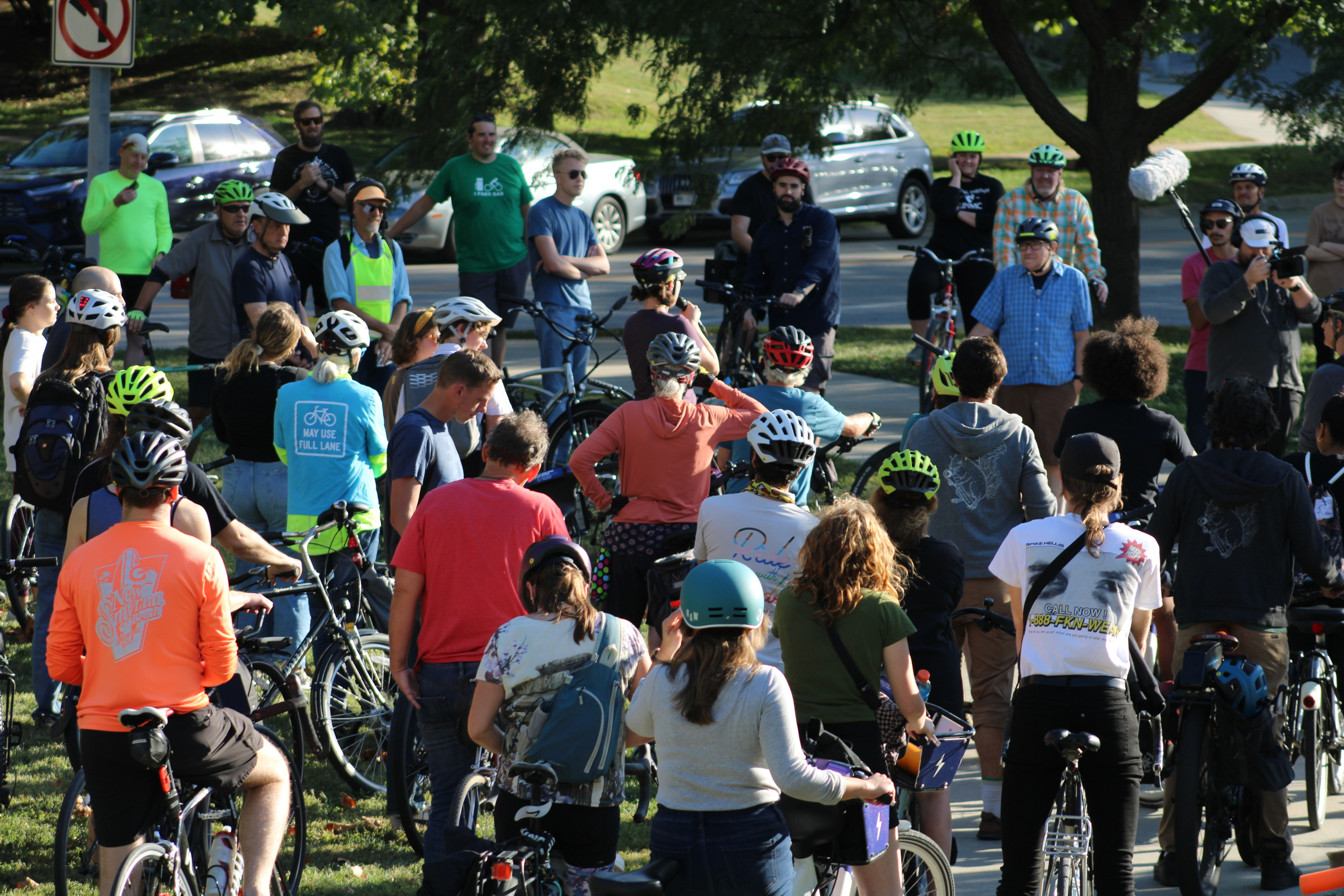The National Bike Summit was held last week in Washington, DC. Thanks to the increasing role of social media, those who could not attend could still learn the best nuggets of info by following #nbs14 on Twitter. One of the more interesting tweets that came across was this from @BikeLeague on March 3:
“A plan without any resources isn’t a plan, but a wish,” says Philip Darnton. No leadership, no continuity, no resources = no cycling.
Certainly, a lack of resources (and leadership that is committed to finding and allocating resources to it) is a problem. It could be said, however, that a slightly modified version of that statement could be true in Omaha:
A Master Plan without the political will to actually implement it isn’t a plan, but a wish.
Omaha is certainly not lacking in plans: We have the 2007 Green Streets Plan and recently approved Environment and Transportation elements of the Master Plan. 2013 also brought a new Traffic Signal Master Plan, The Metro Area Planning Agency (MAPA) has also just started working on a regional Bicycle/Pedestrian Master Plan, and there is a movement afoot to get a Complete Streets policy implemented.
The plans that are already on the books were not just written up and placed in an obscure policy manual; these plans were adopted by the City Council, many by a vote widely in favor, yet, time and time again, the City Council or Planning Commission exempt or change projects so they do not align with the adopted plans. When neighborhoods or businesses are given permission to “opt out” of connectivity, traffic calming or other measures that increase safety for all modes of transportation, all of these plans become weak or even irrelevant.
When developers or neighborhoods fight connectivity, residents often try to create their own connectivity anyway. Case in point: the Pacific Springs neighborhood, just south of the Village Pointe shopping area in west Omaha. Village Pointe has retail, restaurants, a movie theater, coffee shops, outdoor concerts, and a weekly farmer’s market during the summer. How great to live so close to all of these things! But, to quote an old REM song, “You can’t get there from here.” There is no convenient way for residents to walk or bike to the amazing things literally in their back yards because there is no street connectivity between the subdivision and the commercial development.
The red line shows the route a homeowner currently has to take to get to Village Pointe via planned routes. The yellow line is a path made by residents (see walking path photos below). There may not have been political will to create the connectivity in the first place, but neighbors certainly show “If there is a will, there is a way.”
This past week, the City Council was faced with a similar situation to that at Pacific Springs. Neighbors from the Candlewood Hills neighborhood wanted to eliminate an access road that the developer was proposing to build between the neighborhood and a new development next to Costco. Letters written to City Council representative Aimee Melton were consistent in their message: connecting the two areas would bring too much traffic through their neighborhood, threatening the safety of the residents.
According to the Omaha World Herald: “Councilwoman Aimee Melton, who voted against the plan, said she understood the neighbors’ concerns about the connecting road. “I think Candlewood has existed for 30 years as it is,” she said. “The people don’t want to be connected, and they don’t care if they have to go out and around to get to Costco.”
Many times, as in this case, the concerns that lead to opting out of Master Plans appear to be based on misunderstandings about how road design influences traffic and how traffic works. For example, road connectivity can help to reduce congestion and traffic problems rather than exacerbate them because it offers people on bikes and on foot easier access to where they need to go, reducing the number of drivers on the road, while also enabling cars to take multiple routes to get to their destination.
Councilman Chris Jerram provided thoughtful remarks (begin at 44:56) about the benefits of consistently implementing the Master Plan and the benefits of walkability and bikeability, not just for the vitality of our community, but so that developers and potential business owners can have confidence that they understand the “rules of the road” and that these will be followed if they choose to build in Omaha. He was spot on.
In the end, the Council voted 6-1 (Melton voting no) to approve the plan with the access road. Thank you to the City Council members who voted to support a citizen-supported and council-approved Master Plan.
This time, score one for the Master Plan. We hope for more in the future.




